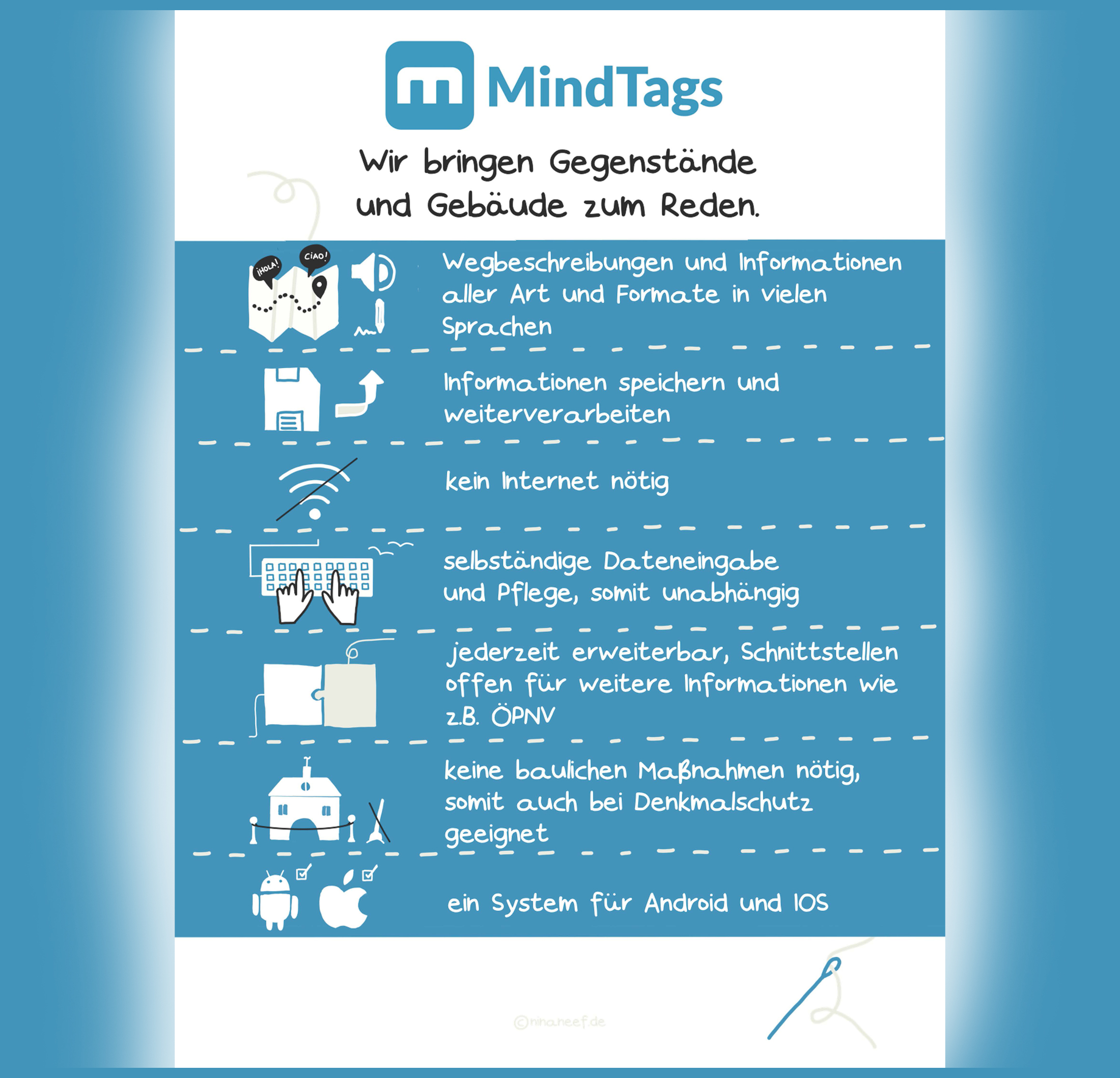What characterises a good barrier-free information intake and orientation in and around buildings? In any case, it should be simple, because too many things are already complicated. This is how a system was developed that fulfils all requirements:
- Suitable for many target groups, so no duplicate structures
- No isolated solution
- Provides information and route descriptions in many languages and formats
- Works in any building
- Easy care and maintenance
- High cost-benefit factor
- Low support costs
- Open interfaces
- Safe functionality, even without internet
- Works also outside the building
- Versatile use
- Information can be stored
You just have to walk and whenever information is available, your mobile device chats. No more searching for QR codes and/or door signs. Via headset, you, as a blind user, are guided through the information you receive and what is most important - your hands remain free. With the options of downloading and editing information, every event becomes instantly accessible for every attendee.
If MindTags gains access to other interfaces, such as traffic lights or public transport for example, this information is also immediately available and ensures safe navigation.
And so that data protection is not neglected, the servers are located in Europe. If you wish, your data can also be stored on your own servers.
The only requirement is that the blind or visually impaired user has completed a training in orientation & mobility, because all route descriptions are created by rehabilitation teachers and are therefore subject to this high standard.
CONCLUSION:MindTags offers everything needed for simple, comprehensive and barrier-free orientation and information acquisition in and around a building.
Post: MindTags Group GmbH

